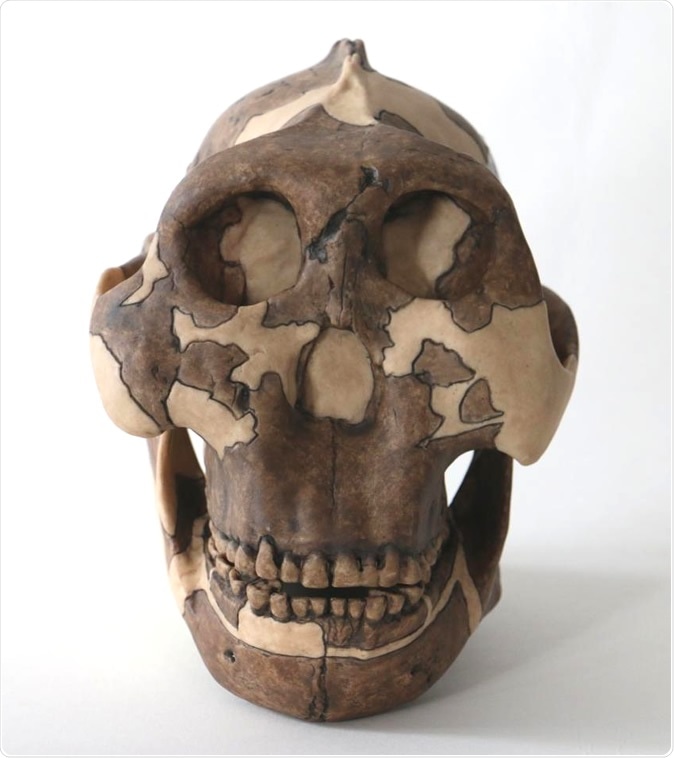There are two main herpes simplex viruses that cause herpes in man – those that cause cold sores or HSV1 and those that cause genital herpes or HSV2.
Humans and chimpanzees both were affected by HSV1 millions of years ago when their lineages split. HSV2 however did not leap on to humans until much later shows new research.
Research has shown that around 1.4 to 3 million years back genital herpes virus or HSV2 jumped from African apes to the humans likely through an intermediate species of apes or hominin that were unrelated to humans.
Hominins are a “zoological tribe” to which humans belong according to the team of researchers from Cambridge and Oxford Brookes universities.
This team found that Paranthropus boisei is a hominin that carried the herpes virus back to humans. This group of half apes-half men were typically bipedal (walking on two feet), heavy set, around 4 feet tall, and had a dish like face and a smaller brain.
They had good chewing teeth and a heavy set of chewing muscles. One of their skulls that was found was called the “Nutcracker man”. Their study in evolution of the herpes virus over millions of years was published in the latest issue of the journal Virus Evolution.

Cast of a P. boisei skull, used for teaching at Cambridge University. Image Credit: Louise Walsh
According to the team, P. boisei or the hominin contracted genital herpes by scavenging for chimp meat at the meeting boundaries of the savannah and the forests.
These hominins were likely to have been infected via open sores that were penetrated by the virus that was present on the dead chimps. HSV1 usually infects the mucosa of the mouth leading to sores in the mouth.
Researchers speculate that the hominins who already had HSV1 did not contract the HSV2 when exposed to it. Then the HSV2 adapted itself to attack another mucosa – that is the genitals.
This adaptation led to the genital form of the herpes among the hominins. From these hominins, P. boisei the virus crept into human ancestors Homo erectus. These human ancestors appeared around 2 million years ago.
The hominins and the human ancestors were quite close in contact – they shared water sources for example at Kenya's Lake Turkana. The HSV2 thus came into the human ancestors. This cycle was explained by the res4earchers in their new study.
Senior author Dr Charlotte Houldcroft, a virologist from Cambridge's Department of Archaeology explained that herpes is a versatile virus that can infect almost all living creatures from humans to corals. Each of these species however have a different type of herpes virus that can affect them.
The virus adapts to the host. She explained that the virus often “jumps” from one species to another after it undergoes a “lucky genetic mutation” and exchange of infected fluid between the species. It could be that genital herpes came into the hominins from consumption of these fluids or via sexual intercourse with an infected chimp or possibly via both routes. For this study they used computational models from the available data and fossil records.
They also used complex viral genetic studies. All this pointed to the fact that this hominin - Paranthropus boisei was the species that was “in the right place at the right time” to act as a vessel that transmitted the infection from the ancestral chimpanzees to the early human ancestors – likely Homo erectus.
She added that once the herpes virus enters a species, it is versatile enough to stay. It can get transmitted between individuals and also from mother to the baby. It is transmitted via body fluids such as blood, saliva and semen and vaginal fluids. She said that this infection is typically suitable for a “low density population”. It can creep across nations in Africa “slowly but surely” she said.